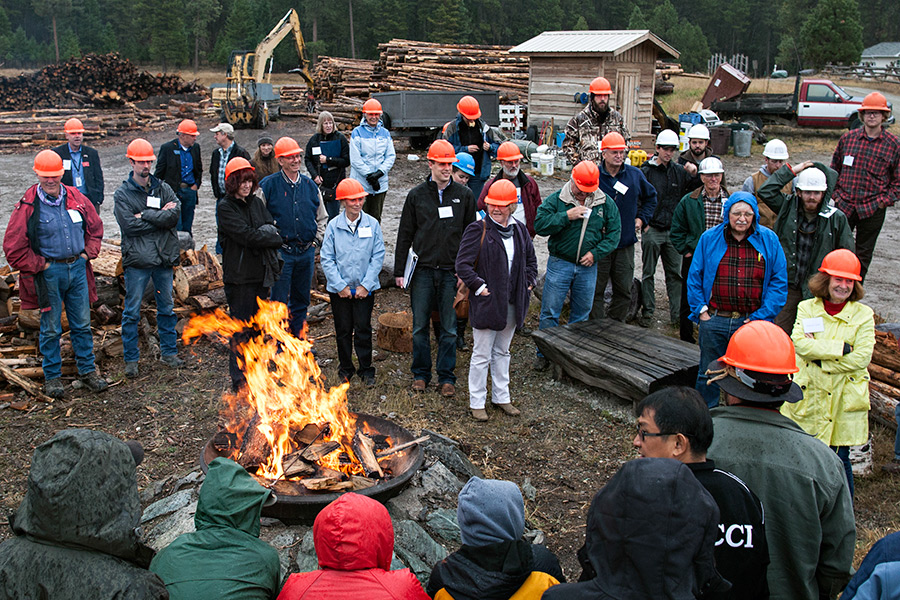A dark cloud overshadowed this year’s public tour of the valley’s forest products industry, as logging officials and forest managers expressed frustration over the lack of access to timber.
Recent litigation and court orders have cast a pall of gloom over the industry, cracking open old divisions as sawmills reduce production.
Last week’s Timber Tour, an annual event hosted by the valley’s chambers of commerce and the Montana Department of Natural Resources and Conservation, was intended to showcase the industry and its role in managing forests, but the event concluded in a dim tone.
“We are having a serious issue with log supply and it’s become a big challenge,” said Paul McKenzie, lands and resource manager for F.H. Stoltze Land and Lumber.
In the last month, two large timber sales — a 36,700-acre project in the Stillwater State Forest and a 37-000-acre project in the Flathead National Forest near Lindbergh Lake — were halted in U.S. District Court. A group of environmental organizations challenged the proposed logging projects, arguing the agencies failed to adequately study or respond to the needs of sensitive wildlife, including grizzly bears, lynx and bull trout.
Sonya Germann, forest management bureau chief for the DNRC, which was involved in the Stillwater project, said District Judge Donald Molloy’s decision was a surprise and “has profoundly affected our program” moving forward.
“The Stillwater Forest is in the heart of timber country and it’s really important for the infrastructure around here,” she said.
“It’s incredibly frustrating. It really affects the income that we’re able to bring in for the trust beneficiaries. And something that I hope you’re all realizing here today, it effects individual lives, too.”
Around the same time the timber sales were halted, Stoltze and Plum Creek both announced reductions in production hours, citing a lack of available log supply. Stoltze also laid off 10 employees.
Speaking to a crowd of over 50 people who attended the Timber Tour, McKenzie said the situation needs to be addressed otherwise Montana’s sawmills will continue to shrink and maybe even disappear, leaving the state without a tool to manage its forests.
“Once this all goes away, we’re never coming back, folks,” McKenzie said.
Others refute claims that logging companies are struggling to find available timber.
Mike Garrity, executive director of the Alliance for the Wild Rockies, a regional group that commonly opposes timber sales over environmental concerns, pointed out a recent announcement by the U.S. Forest Service that it had met its timber harvest goal for fiscal year 2014 in Region One, which encompasses Montana, North Dakota, Northern Idaho and Northwestern South Dakota.
Last week Faye Krueger, regional forester for the USFS, said roughly 280 million board feet of timber were harvested from Oct. 1, 2013 through Sept. 30, 2014. It was the first time the region had met its target in over 14 years, according to the agency.
“They’re making stuff up,” Garrity said of timber companies complaining about supply shortages. “We haven’t shut down the forests. These people just want to get rid of all environmental law so they can clear-cut everything. Until they can do that, they won’t be happy.”
